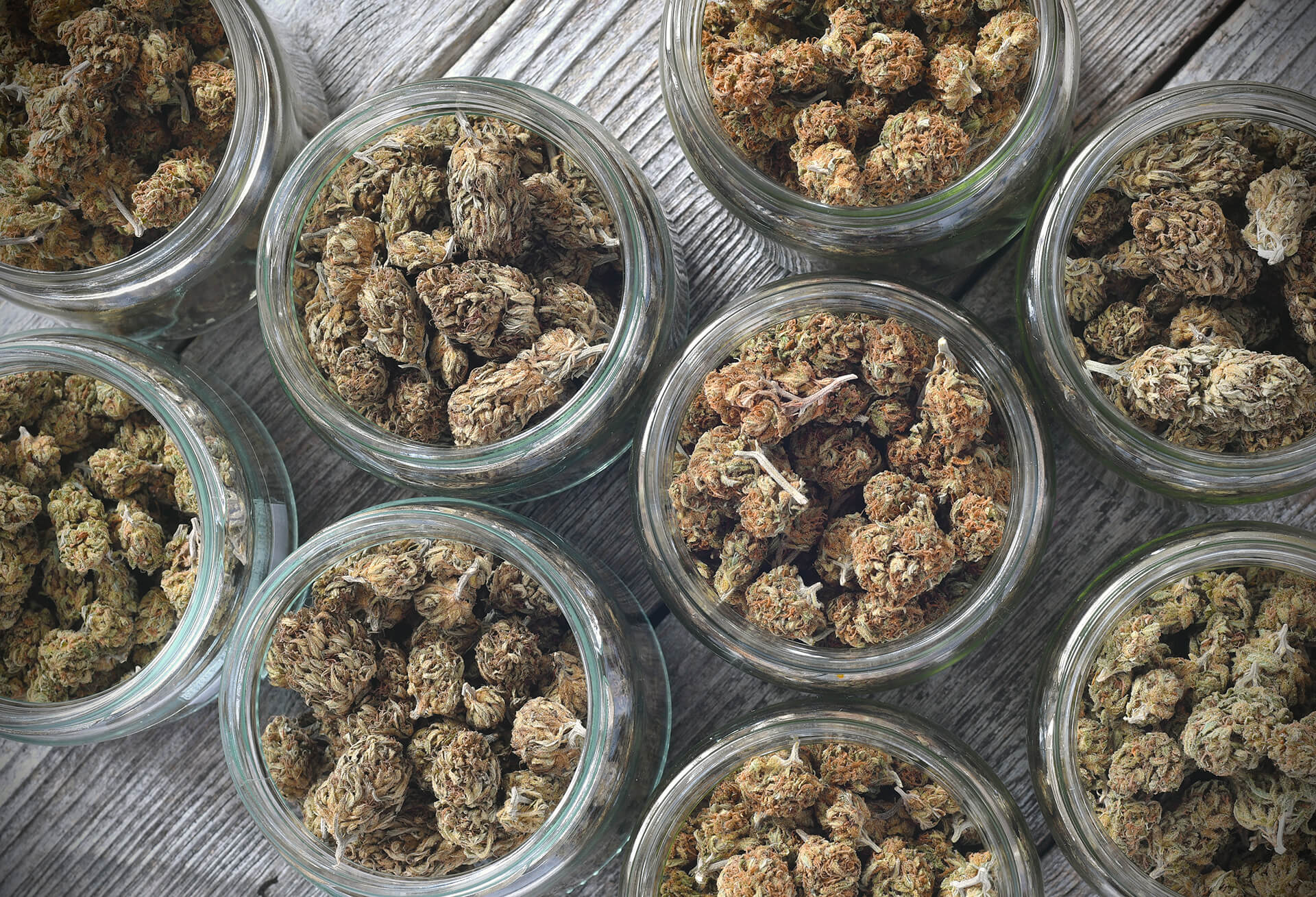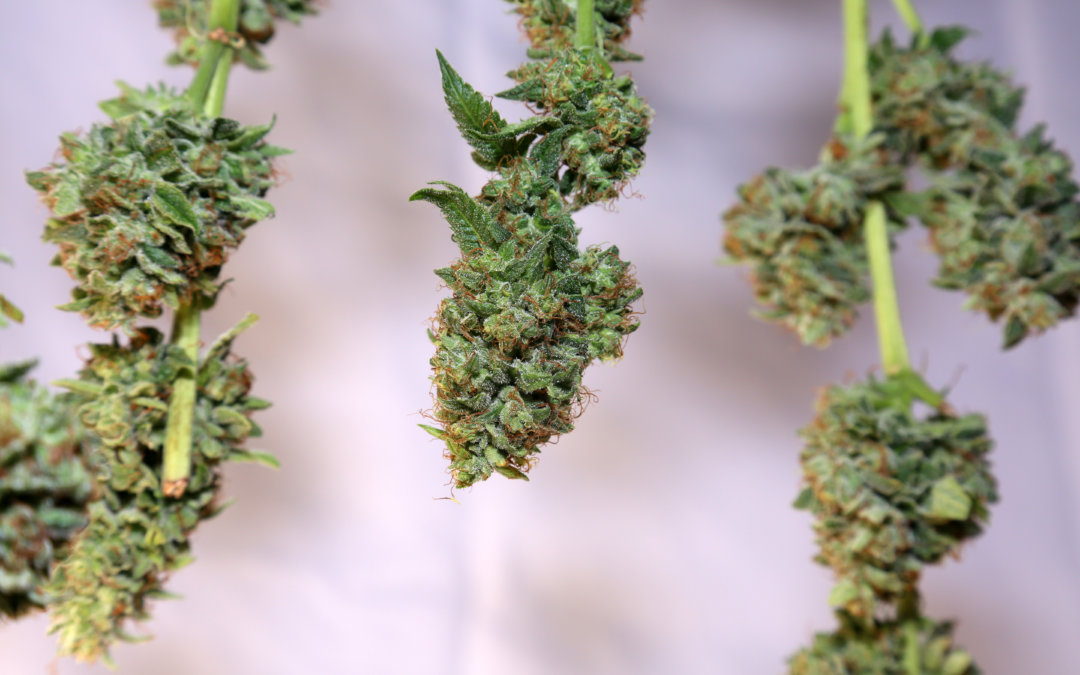Drying can be one of the most challenging parts of the cannabis cultivation process, but it’s also one of the most vital things to get right when combating mold; excess humidity can easily cause a buildup of mold and mildew inside the bud, rendering your product not only unsellable, but unsafe. Following best practices when it comes to drying weed will allow your buds to dry evenly, and allow you to optimize your harvest to sales ratio and maximize your profit.
Top Three Considerations When Drying and Curing Cannabis
Thoroughly and evenly drying cannabis is critical because this process impacts the quality of the final product. Properly dried cannabis results in optimized terpene and flavour profiles. There are three main things to keep in mind when drying and curing cannabis.
- Drying and curing cannabis takes time, and it’s important not to rush the process. Variations in the drying process can result in requiring anywhere from one to two weeks to properly dry the flower. Drying time can depend on the size of the bud, as larger buds will take a longer period of time to dry than smaller buds, and the conditions of the drying room.
- Maintaining optimal drying and curing room conditions is critical. Humidity, temperature, and airflow all impact the drying process, and it’s important to ensure that you maintain optimal conditions in order for your cannabis to dry evenly. The drying room should be kept dark, with low and gentle air circulation. It’s also important to closely monitor the room’s temperature and humidity, and adjust when necessary. Ideally, a drying room should be equipped with both a humidifier and a dehumidifier, noting that self-adjusting equipment will help to keep the room at a constant humidity level.
- Curing containers must be airtight. Otherwise, the curing process simply won’t take place. Curing containers should also not be overpacked; packing to about 70% capacity will allow the buds to move around freely. The key to curing cannabis is burping your jars — letting moisture and CO2 escape from the sealed curing jars. Schedules for burping will vary greatly depending on the batch and your growing conditions.
Main Challenges When Drying Weed (And How to Overcome Them)
Variations in the size of buds, humidity, airflow, and temperature, can all create challenges in the drying process. Overcoming these challenges will be critical to the overall quality of your final product.
Timing is one of the most important things to get right. When you reach harvest time, you need to be prepared for the next steps right away. The drying room must be prepared and in ideal conditions — with the appropriate equipment, humidity, temperature, and airflow — in advance of harvesting. Leaving harvested cannabis sitting in bins for long periods while awaiting their time in the drying room is begging for mold to join the party and will be detrimental to your crop. It’s also important to account for space. As mentioned above, keeping the buds too close together will prevent adequate air flow and increase humidity, creating a breeding ground for mold growth. When drying, ensure that the flower is properly spread out to avoid any close contact and prevent mold and mildew from developing. Finally, cleanliness must be a focus of every step of the drying process. Of course, proper sanitation and hygiene is imperative to ensure the quality of the flower. However, the possibility of cross-contamination must also be a consideration, as plant contact can lead to the contamination of other plants. Employees need to monitor quality alongside mold and mildew growth throughout the entire process.
It’s not all doom and gloom, however, as there are plenty of ways to overcome these challenges and optimize your harvest. By following health and safety protocols and implementing cleanliness procedures in every step of the process, you can automatically reduce the risk of contamination and improve the quality of your harvest. It’s also imperative to optimize the environment of the room — much like a creature of the night, cannabis likes cool temperatures, darkness, and controlled humidity. Harvested buds are sensitive, so it’s crucial to monitor for ideal conditions.

How to Dry Weed to Maximize Profits
At the end of the day, your goal as a cannabis cultivator is to maximize your profits, and your drying methods could be what make or break your harvest. Proper drying of harvested flowers results in the preservation of their properties, but to completely stop the degradation process and best preserve the terpenes and cannabinoids, it’s imperative that curing is part of the post-harvest process. This will serve to improve the flower’s profile, smoothness, and overall taste. Additionally, drying weed allows you to manage THC, terpene, and cannabinoid levels, giving you greater control over the profile, terpenes, flavour, smell, and overall quality of your product. Finally, it reduces the risk of mold and unusable product, and saves you from taking the hit for costly product loss.
Understanding how to effectively dry weed is paramount to optimizing your harvest and maximizing your profits. By monitoring and controlling the temperature, humidity, and air flow of your drying room, choosing the right drying method, and properly curing your cannabis, you’ll avoid costly errors, elevate your product quality, and improve your overall bottom line.

